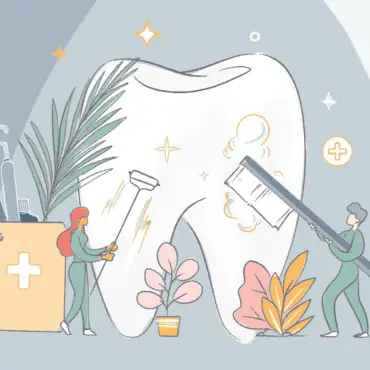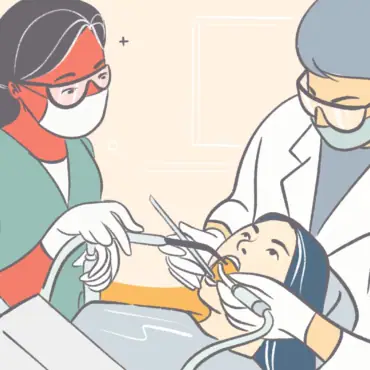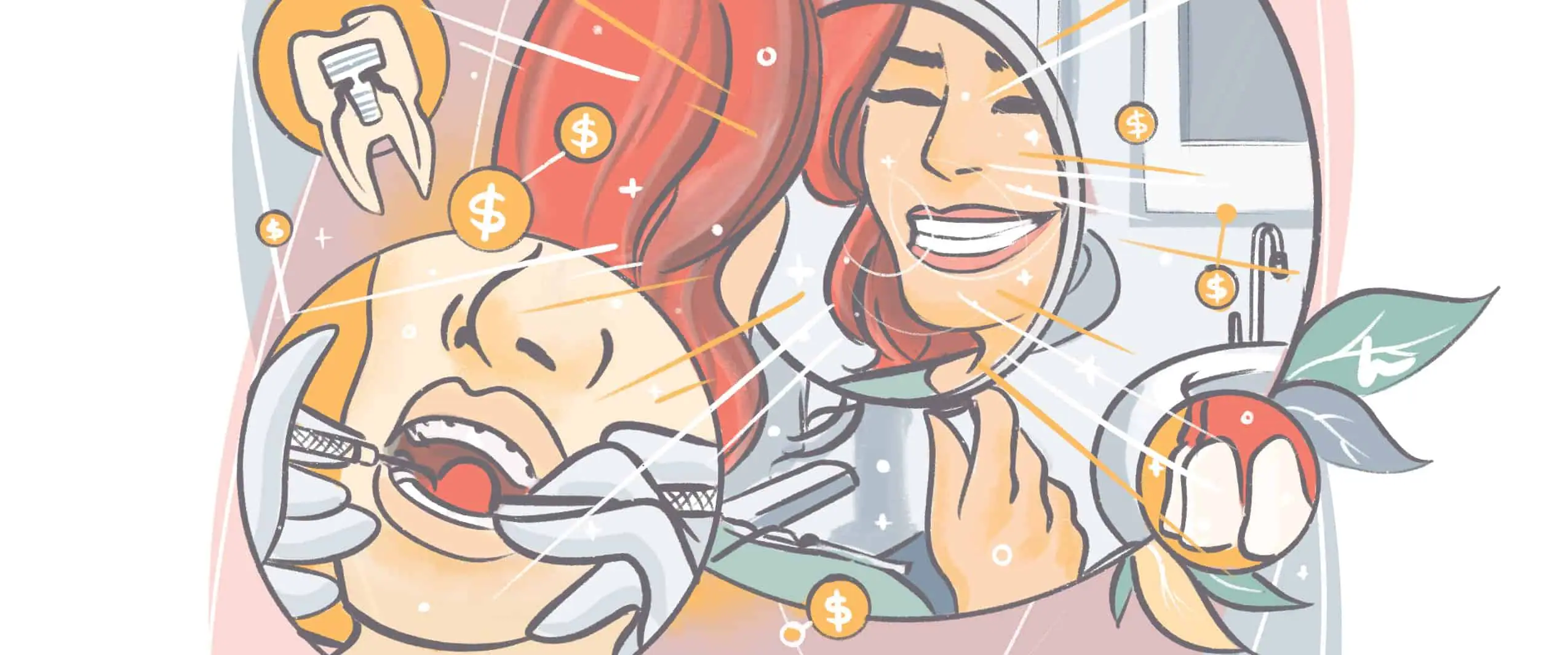A good smile can help you look younger and even more energetic. And almost all of us want that. As a result, teeth whitening techniques are highly sought after these days. Whitening (or “bleaching”) trays are growing in popularity, as a way to help us keep our smiles looking their best.
Young people and adults alike can use teeth whitening trays, based on what defects or stains are on their teeth. (They’re generally not advisable for children.) A study revealed 80% of Americans want cleaner, whiter teeth, particularly those of us 18 to 49.
What are teeth whitening trays?
Teeth whitening is not a medical procedure, since it doesn’t result in healthier or stronger teeth, but it can certainly result in whiter teeth. It’s a bleaching procedure that uses custom whitening trays, placed over the teeth to give that bright and fresh look back to your mouth without the expense of other costly, generic cosmetic dentistry solutions. Its greatest advantage is that it can be done without a dentist’s supervision.
How do whitening trays work?
Proven tooth whitening items or bleaching trays depend on demonstrated advances (35% hydrogen peroxide for in-office power fading or 10% to 15% carbamide peroxide for at-home whitening) to lessen natural stains and change the intrinsic tooth color.
Over-the-counter whitening items use a mix of surfactants, abrasives, anti-calculus specialists, and low degrees of hydrogen peroxide to lessen outward stains and help keep up whiteness after expert treatment.
What’s the timeframe to wear whitening trays?
Unless you have sensitivity issues, you should be diligent in how often you wear them. Consistent use until results become visible is important. The application of the teeth whitening varies based on the amount of whitening you desire. If you’re not experiencing any sensitivity, you should wear the trays for at least 1-2 hours a day, or even sleep with them in your mouth. However, some patients may require significant wear to ensure stains are removed, while others may only require minimal treatment; it’s based on the needs of each case.
But more importantly, users should expect to wear the teeth trays until the teeth have reached the right shade of white planned to be achieved. However, it can take a few weeks in some scenarios, or for significant stains, it can take up to a year.
Generally, dentists don’t recommend persistent use of whitening trays for a whole year. Instead, patients are often instructed to undertake different styles of treatment to achieve their desired effect. The treatment cycle may look something like a couple of months with trays on and a couple of months with them off. This allows teeth to remain mineralized.
Are whitening trays effective?
Yes, they sure are. Teeth whitening trays have become an accessible and relatively easy way to improve your dental appearance after just weeks in some cases. Always ensure you get a recommendation and confirmation from your dentist before you use any tooth whitening tool.
You can also help maintain the initial tooth whitening results by flossing and rinsing every day. Additionally, ensure you avoid acidic and tannin-rich foods and drinks that contribute to staining.
What are custom whitening trays?
Lots of whitening tray products are available over the counter and don’t require direct supervision of a dentist. But according to the study and report, the safest whitening trays are custom-fitted mouth trays made by your dentist.
These are teeth or mouth guard-like trays specifically designed to fit your mouth so you can avoid problems associated with ill-fitting trays irritating your gums, leaking tooth whitening gel, as well as not whitening as efficiently as custom trays.
With this tooth whitening option, the tray is filled with a peroxide-based bleaching gel or paste. It is then placed over the teeth for one to several hours a day for up to four weeks.
How much do whitening trays cost?
Generally, they cost between $150 and $600, depending on the dental healthcare services. Whitening trays can be custom fitted by your dental practitioner or purchased over the counter. It’s all based on your preference and affordability.
Sign up for our newsletter.
Just let us know a bit about yourself.
What are the alternatives to whitening trays?
- Whitening strips and gels
These are small pieces of a flexible plastic called polyethylene. The strip is coated in a whitening gel. The strip contains hydrogen peroxide (around 60%). You take each strip and mold it around your teeth, one strip for the top and one strip for the bottom. The peroxide gel seeps into your teeth to lighten them.
Strips do have some limitations. Some don’t get into the middle of spaces or the bent bottoms of teeth, so you frequently get an impact where the focal point of the tooth is white; however, at the edges where the tooth bends, it’s yellow or dark. These yellow or dark spots become more noticeable with white strips because the contrast in shading gets more noticeable.
- Whitening toothpastes
Whitening toothpaste can brighten teeth marginally by eliminating surface stains, for example, those brought about by drinking espresso, red wine, or smoking. The surface effect notwithstanding, brightening toothpaste can’t change the normal shade of your teeth or combat stains that go further inward than a tooth’s surface
Unlike other tooth-whitening products, whitening toothpaste doesn’t contain peroxide. Whitening toothpaste typically includes dedicated abrasives. The abrasives work by polishing the teeth. Additionally, abrasives help to dissolve stains by producing cleansing chemical compounds in the mouth.
- Whitening light devices
These frameworks consist of a brightening gel and a plate. The application is comparatively easy, with just the need to attach the light to the plate and turn it on. The LED typically remains on for 15-30 minutes, contingent upon the brand.
- Professional whitening
The safest and most effective way to get your teeth whitened is professionally through your dentist. While sensitivity is normal, this is the best way to whiten your teeth safely and get the best results.
Due for a checkup?
Find a top rated dentist near you that takes your insurance.
Natural methods
- Preparing baking soda and hydrogen peroxide
There are some effective DIY teeth brightening techniques. The best of these is baking soda and hydrogen peroxide, which is an easy and cost-effective choice. The soda mixture is slightly abrasive and will scour away surface stains, eliminating microorganisms. Hydrogen peroxide is an antibacterial substance, which likewise eliminates microscopic organisms. When you put the two together, they work to improve tooth color.
- Activated charcoal
Recently, activated charcoal is becoming known for its teeth whitening properties. When used as a toothpaste however, it can be rough on tooth enamel. In that capacity, it’s more suitable to be used as a tooth mask, instead of brushing with it. To make a tooth mask, blend a tablespoon of activated charcoal powder with a small amount of water to make a glue-like consistency. Apply the glue to the teeth, let it sit for several minutes, then rinse away.
However you go about it, the most productive results for whitening teeth will start with a visit to your dental specialist. Issues concerning gum irritation and teeth sensitivity should be communicated with your dentist prior to beginning whitening treatment.
How can I find a dentist near me for whitening trays?
Opencare helps you find top quality dentists and you can book online in minutes.
If you’ve ever wished your teeth were a bit brighter, book an appointment with your dentist and discuss custom whitening trays to put that freshness back into your smile. You can find a dentist for custom whitening trays or other whitening procedures using Opencare today. Stay safe!








